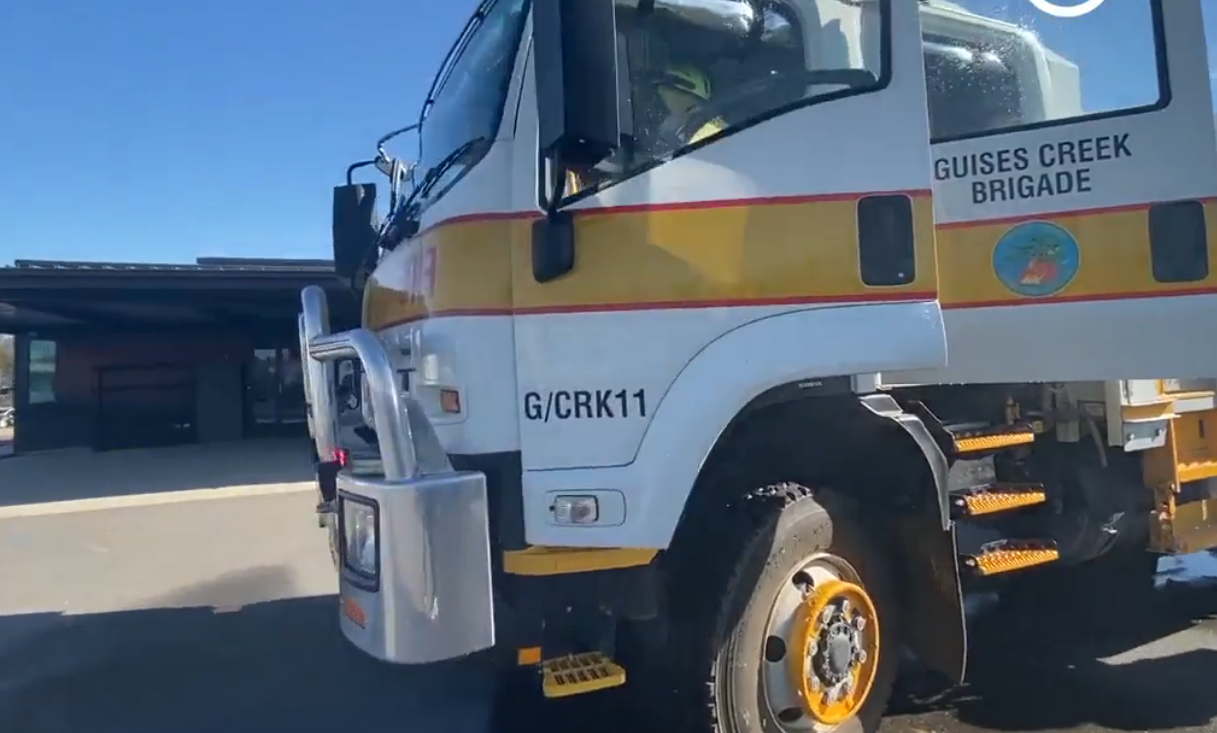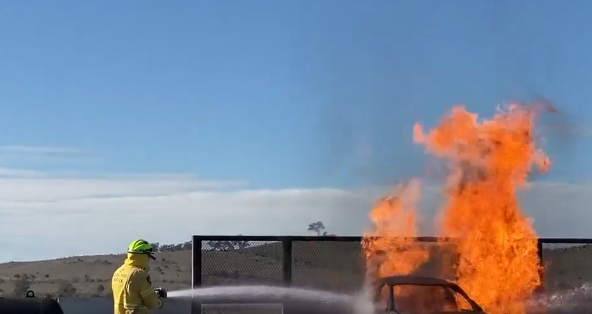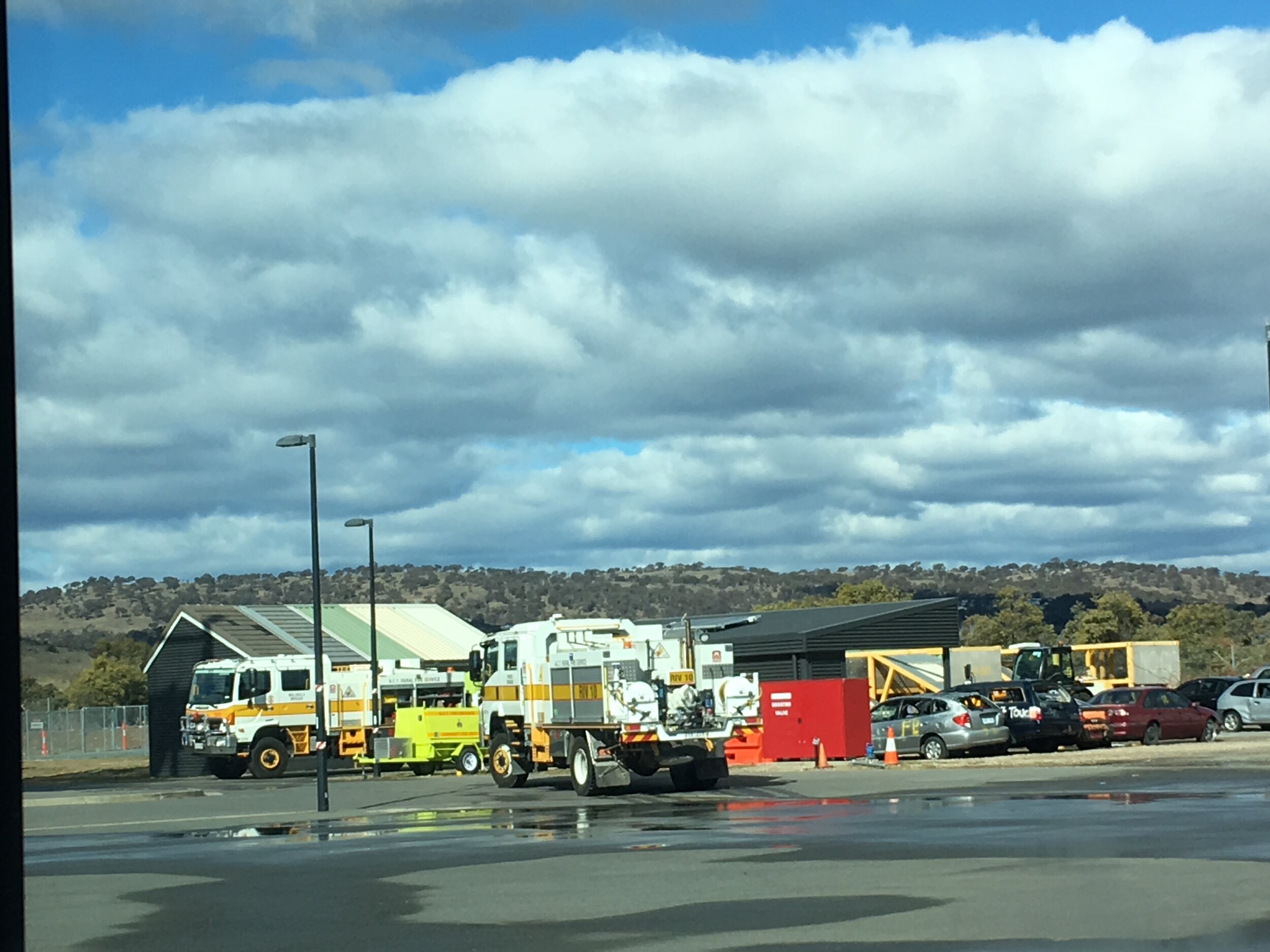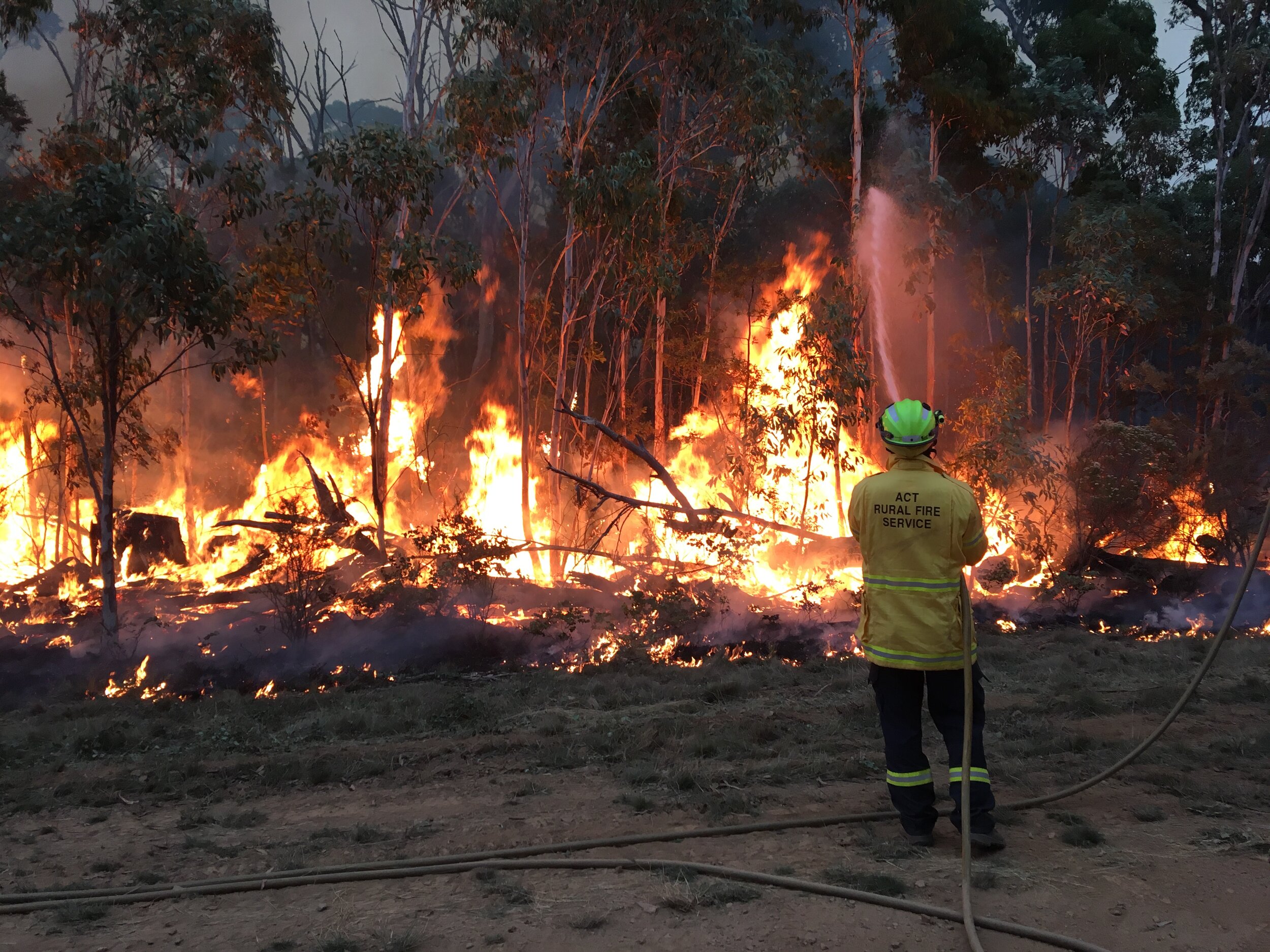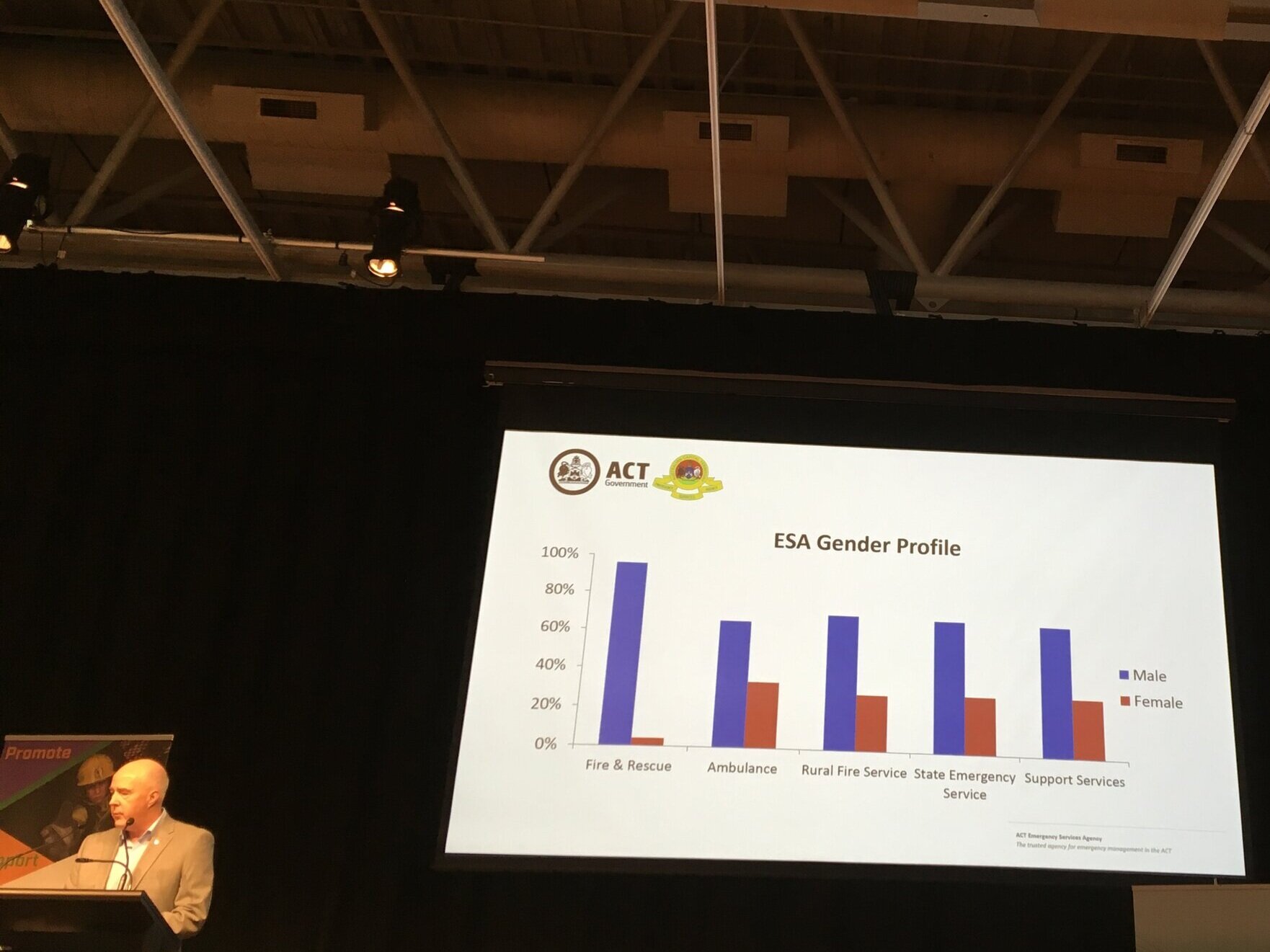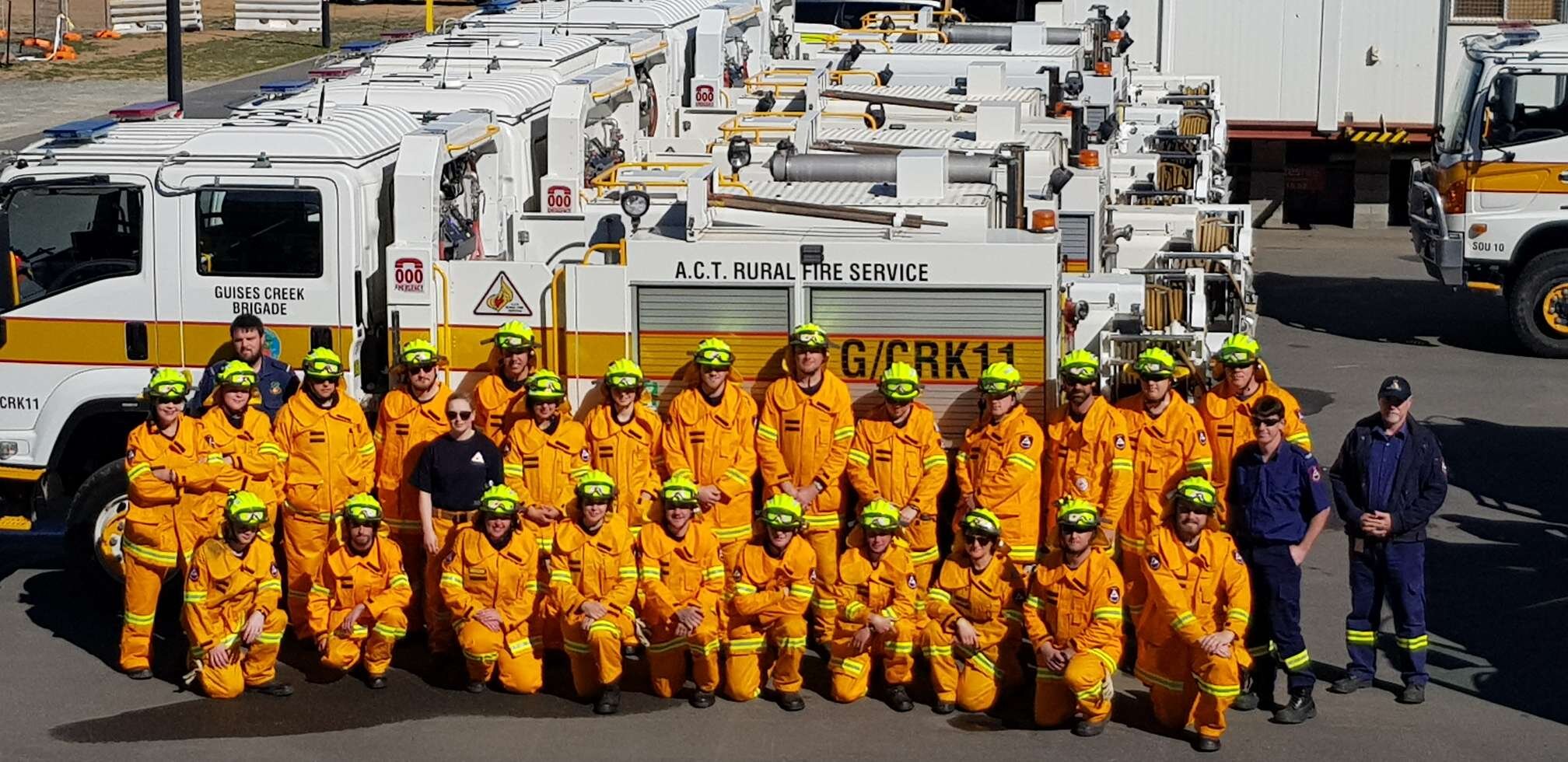
Our volunteer rural firefighters have a thousand and one stories to tell.
Kowen Forest Exercise -
2 May 2021.
Martin Greenwood captured the excitement of a great all-brigade training day. Operation Kowen.
It’s about having fun…….
Getting people together.
It’s all about the team and getting to know the team.
A bit of realism goes a long way to add to the drama!
Great operational support from ACT SES on the day!
It’s about realism and get the adrenaline pumping!
Great actors.
Whether it’s a staged car fire or a roll-over, the training exercise had it all!
Approaching the car fire.
“Hindsight is gained through experience.”
“It is easy to be wise after the event. ”
Dealing with a vehicle fire
And the Academy award goes to!
Here at the ACTRFS we’re a fun and multi-talented team always willing to give it a go for the greater good.!
And no, the Tidbinbilla truck is not on fire….
Seven different drill stops including awesome navigation exercises, hose dragging (and dragging, and dragging…), drafting water, drone observation, and on and on. A can I say, the lunches were great!!
New ACTRFS Volunteers -
1 August 2020.
After an intensive four-week program facilitated by experienced ACTRFS volunteers who gave generously of their time and energy to share their knowledge and experience, 26 new ACT Rural Fire Service volunteer firefighters completed the ACTRFS Bush Firefighter Course. Our dedicated volunteer educators instructed and assessed the new recruits across a combination of theory and practical sessions to ensure that that they can safely do their work. If you’re interested in becoming a volunteer rural firefighter with the ACTRFS, please send an email to ACTRFS.Membership@act.gov.au to express your interest.
Look, listen and learn.
Understand it.
The primary influences on how bushfires move through the landscape are humidity, geography, wind and temperature. Volunteer bushfire fighters need to have a good knowledge of fire behaviour.
Going uphill
Fire moves faster uphill because there is less space between the flames and new fuel to burn. The radiant heat caused by the fire also pre-heats the fuel, making it easier to ignite.
Guises Creek 11
Volunteer educators drawn from across ACTRFS brigades instruct the newbies.
Burn it.
Different types of bushfire fuel (vegetation) burn differently: finer fuels like grasses burn more quickly, while more substantial, woodier fuels burn with greater intensity. Volunteer firefighters need to understand how and why different fuel types burn.
“Volunteers are not paid - not because they are worthless, but because they are priceless.”
“Waiting, prepared to serve, is serving. ”
Dealing with a vehicle fire
Douse it.
Learning to appropriately control water flow and conserve water while fighting fire is crucial to both firefighter safety and managing the fire.
And no, the Tidbinbilla truck is not on fire….
Bushfires are a natural, essential and complex part of the Australian environment and have been for thousands of years. Much of the Australian bush has been shaped by bushfires, with some plants requiring intermittent burning to complete their life cycles. People living in fire-prone areas must prepare a bushfire survival plan and be ready to carry it out.
On the High Seas - February to March 2020.
Royal Caribbean Cruise Lines used their newest vessel, Spectrum of the Seas, to host three complimentary four-day luxury ‘thank you’ cruises for Australian bushfire first responders following the 2019-2020 fire season. The first cruise departed Sydney on Saturday February 29 and returned on Wednesday March 4, and a second cruise repeated the same itinerary from March 7-11. A third cruise sailed from 13-17 March 2020. A number of volunteer firefighters from the ACTRFS, together with their friends and family, were able to enjoy a fabulous top-of-the line cruise experience with spectacular entertainment and awesome food. Thank you Royal Caribbean.
First Spectrum Cruise - 29 February 2020
‘Tell him he’s dreamin.’
There is nothing quite like the experience of sailing out of Sydney Harbour and back in through the Heads. Spectacular views of the Harbour and all it has to offer were enjoyed by those first responders (and many friends and family members) lucky enough to secure a berth on broad Spectrum of the Seas.
Skylights!
Bumper Cars - March 2020
Drive it.
‘Spectrum’ offered something for everyone.
Eat it.
Luxury. Amazing food for breakfast, lunch and dinner and at all times in between. The pizza bar was great for a less formal feed. Nothing was too much trouble for the Spectrum crew and we were all spoiled to a person.
View from the Eye - March 2020
Spy it.
A great vantage point from the top of the ship and from the dining rooms.
Room with a View
Village Firefighting -
August 2019.
In August 2019, a number of ACTRFS and NSWRFS volunteers completed the ‘Village Firefighter (VF) course at Hume. Successful completion of the program provides the competencies needed to fight small structural, vehicle and similar fires, using defensive techniques. VF training involves theory briefings and practical activities and normally takes at least 40 hours to complete. The program covers fire behaviour, safety, use of equipment, team work, procedures and fire protection systems. Participants must already have completed to BF course. On successful completion of the VF course, participants acquire competency in PUAFIR218 Respond to Isolated Structure Fire Training. The VF instructors and assessors were drawn from the ranks of suitably qualified and experienced volunteer firefighters as well as paid ACTRFS staff, including Lukas Tan, Les Jordan, Charlotte Adams, Glenn Crisp, Anthony Beck, Chris Richards, Rohan Scott and Simon Leigh. General assistance with the course was provided by a number of more junior volunteers including Zara O’Sullivan, Michael Jordan and Melita Bozin.
Hose drills.
Assessing and planning.
It’s ‘Smoko’ time.
“Safety doesn’t happen by accident.”
Volunteer firefighting instructors are drawn from the ranks of ACTRFS brigades.
Hose it.
Hose, smoke house and ropes and ladders are fundamental VF skills.
“Firefighters save hearts and homes.”
“Firefighters are essential to the safety and security of our local communities. We owe it to these men and women to provide them with better training and equipment so they can do their jobs more effectively and safely. ”
Time for a break.
Assess it.
Participants are assessed in managing residential structure fires, vehicle in carport fires and farm shed fires. As always, crew safety is a priority issue.
Good feedback is vital to the learning process.
Hall 10.
What's in a Photo? Taking the 2019 Agency Picture
Martin Greenwood Behind the scenes on putting together the 2019 ACT Rural Fire Service whole of agency photo at the ESA Helibase in Hume 11 May 2019.
Victorian High Country Fires -
March 2019.
NASA’s Earth Observatory reports that ‘[i]n early March 2019, a rash of bushfires sprouted across the Australian state of Victoria, particularly in the hills east of Melbourne. Government officials noted at least 380 small and large fires burned in the state in the first week of the month, with the vast majority caused by lightning…. [t]he fires came particularly late in the season for Victoria, though they were not surprising. Months of intense summer heat and long-term drought have parched much of the landscape and primed the vegetation for burning.’
More than 2,000 emergency personnel, including interstate firefighters with trucks, aircraft and other equipment from the ACT, NSW and SA, worked alongside Victorian firefighters from the CFA, FFMVic, MFB, to protect lives and property.
On Thursday, March 7, 2019, fourteen ACT Rural Fire Service volunteer firefighters headed to Victoria on Thursday, March 7, 2019 to fight bushfires burning in the Victorian Gippsland region. After overnighting at Bairnsdale, on 8 March the crews headed to Swifts Creek for an update briefings before heading to the high country to tackle extensive fires over the next three days
Victorian High Country - March 2019
ACTRFS and NSWRFS members.
It’s all in the Team Work.
ACTRFS and NSWRFS volunteers pose for a group shot after lunch
Thirsty Work
‘Swift Creeks Serenade’ - March 2019
Swing It.
Serenaded by the Australian Army Band before heading up into the high country.
Birds Eye View
Time for a Break.
“Don’t get used to accommodation like this!”
‘The End of the Deployment’ - March 2019
Just Another Day on the Fire-Ground.
Keeping a Watchful Eye
Watch it.
Keeping a close eye on the fireground.
Wellington, New Zealand Women in Firefighting (WAFA) Conference -
26 - 28 September 2018.
The 2018 WAFA Conference ‘Looking Forward, Looking Back: Shaping the New Norm’ was held in Canberra’s sister city of Wellington, NZ in September 2018. The ACT Government sponsored the conference attendance, travel and accommodation of three female career firefighters from ACT Fire & Rescue and two ACTRFS female volunteer firefighters. Career and volunteer firefighters from across Australia and from various other countries attended the conference. There were 221 delegates from eight countries and an array of fabulous international speakers, including Mark Brown, then Chief Officer, ACT Fire & Rescue. The program offered plenty of hands-on activities, including lessons on fire behaviour analysis, for those who wanted a break from the more academic parts of the program as well as the opportunity to explore wonderful Wellington. A big thank you to WAFA and to the ACT Government for sending a great Australian contingent to NZ. See WAFA Conference 2018 Evaluation and QFS synthesis here.
Conference Dinner at Te Papa Museum.
Inspecting the NZ vehicles.
More NZ Fire Vehicles
Drones at Home
On ‘Emotional Survival’
WAFA Conference Dinner
Harbour Views over Wellington
The Te Papa Museum was a wonderful conference venue.
Light Aircraft
Time for a Break.
Birds Eye Views
“Effective leaders are not victims. Thinking and communicating like a victim can - in the long run - hold you back. ”
Inspire and empower the women around you.
Model it.
Brand Essence
A nice selection.
The World HQ of the Verb!
NZ Fire Services USAR Vehicle
Hurry-up and Wait
A snug fit.
Live It. Breathe it.
‘We Love Peace and Harmony’
What is emotional intelligence?
Mark Brown, Chief Officer, ACT Fire & Rescue, speaking on the ESA’s gender profile and lesson learned in recruiting female firefighters.
Downtown Wellington
“People who feel they belong...perform better, become more willing to challenge themselves, are more resilient”
Bushfire Fighting Course
September 2018.
The September 2018 Bushfire Fighting (BF) Training Course at Hume. BF training is a nationally accredited training program which involves theory briefings and practical activities delivered face-to-face over around 40 hours, usually over four week-day evening sessions, and three weekend days. The units of competency aligned with the BF course include PUAOHS001 Follow Defined OHS Policy and Procedures, PUAFIR215 Prevent Injury , PUAFIR204 Respond to Wildfire, PUAOPE013 Operate Communications Systems and Equipment, PUATEA001 Work in a Team, PUATEA004 Work Effectively in a Public Safety Organisation, PUAEQU001 Prepare Maintain and Test Response Equipment . These photographs of the September 2018 BF Course are courtesy of David Pennock.
Almost out.
Waiting, prepared to serve, is serving.
Oh, the wondrous joys of rake-howing.
Just Do It.
Group instruction.
Ghostbusting.
Left for life?
“A hero is no braver than an ordinary man, but he is brave five minutes longer. ”
On the road again.
It’s wet work.
There are many reasons to join ACTRFS as a volunteer - to protect your families, your friends, your home and assets, your community and your way of life. Volunteering with ACTRFS offers the chance to learn new and valuable skills that will not only assist you as a volunteer firefighter, but also in your day-to-day life and your day job. It’s also a wonderful opportunity to meet some amazing people you wouldn’t normally meet. Activities like training, development, community events, providing information and supporting other emergency services rounds out the volunteer experience.









